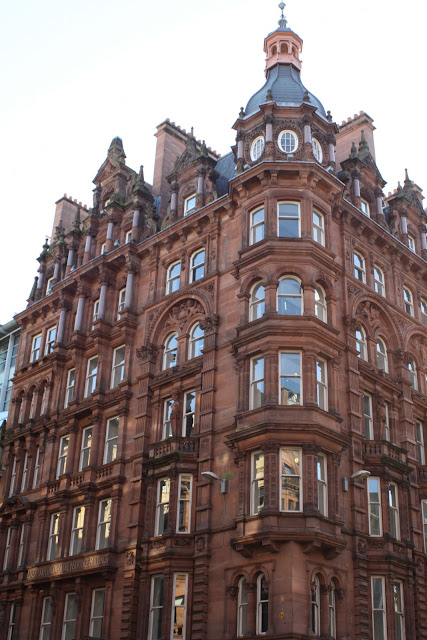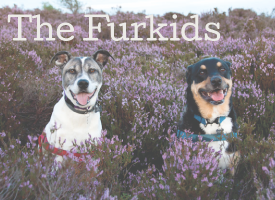After leaving Oban we drove through
Glen Coe. A beautiful natural area, it is best known for incredible hikes and one of the most
horrendous massacres in Scotland's history. I didn't realize I hadn't taken any pictures until I was loading my memory cards back at home, but I can assure you Paul and I spent the entire day enjoying the beautiful scenery. The Glen Coe Visitor Center offers some background on both the human and natural histories of the area as well as some current conservation effort information. We hope to go back (that list gets longer with every trip!!) one day when we can spend some time hiking in the area. I will make a note of the fantastic spot we happened to stop for lunch-
The Real Food Cafe. We were both quite hungry, so just stopped at the next place we saw. We happened to luck out, as this establishment not only offered DELICIOUS food (most of which is morally raised/grown, all of which is free trade) but also practices eco-friendly methods such as reusable and/or biodegradable food containers and recycling. On top of this business practice that I loved they were also the only place I've found to serve crunchy fish with their fish and chips- and I strongly prefer that to battered. So if you ever find yourself in Glen Coe, eat there!
(and no, they're not paying me)

On our way over to Glasgow we decided to make one more stop, at
Inchmahome Priory. Situated on a small island in the middle of the Lake of Menteith (the only
lake in Scotland- due to a misreading!), it was beautiful.
Probably top of my list of pretend-places-to-live, Inchmahome Priory was founded in 1238 by the then-Earl of Menteith, whose chief seat was on the neighboring island.
The east end of the church, containing the choir and presbytery.
Yep, more of these!
The sedilia, used as seats by the priest and his assistants.
The two lower figures are Earl Walter Stewart and his countess, Mary. They were buried under the choir in the priory, but the effigy was removed to the chapter house for protection against the elements. They are reaching towards each other, with their dogs at their feet, making this double effigy popular to romantics.
The priory is surrounded by thick vegetation, through which there is a beautiful walking path. There are a few trees with these massive, gnarled roots- witness to the high water table of the island.
One of three sweet chestnut trees planted on the island in the 16th century. They don't grow well in the poor soil condition, but they do make for interesting scenery!
Views of the lake from the ferry ride back.
The shore near the ferry docking. If it's this beautiful in October I can't imagine it in summer!!




































































